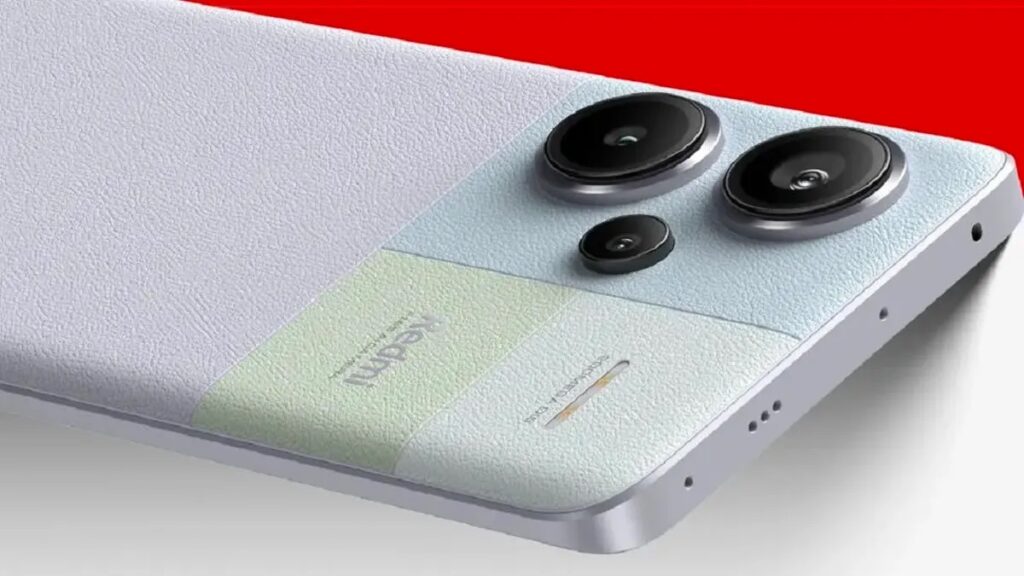
Summary
- The Redmi Note 13 Pro Plus is equipped with a MediaTek Dimensity 7200-Ultra 5G chipset, renowned for its 4nm architecture.
- The Note 13 Pro Plus boasts a smooth 120Hz curved AMOLED display and features an in-display fingerprint sensor for added convenience.
- The camera setup comprises a high-resolution 200MP wide-angle lens, an 8MP ultra-wide-angle lens, and a 2MP Macro lens for detailed and versatile photography.
The Redmi Note 13 Series has just made its debut in India. These top-notch mid-range smartphones are gearing up to compete with the likes of the OnePlus Nord series, Realme, and iQOO. The new Note 13 series consists of three models: Redmi Note 13, Redmi Note 13 Pro, and Note 13 Pro Plus.
Redmi Note 13 Pro Plus Pricing and Offers
The Redmi Note 13 Pro Plus introduces a variety of configurations, each catering to different user preferences. Starting at a base price of Rs 31,999, the entry-level model offers 8GB of RAM and a spacious 256GB of storage.
For those seeking a bit more memory, there’s a variant with 12GB of RAM and the same 256GB storage, available at a slightly higher Rs 33,999. Going even further, the top-tier option in the lineup boasts a generous 12GB of RAM and an expansive 512GB of storage, with a retail price of Rs 35,999.
This pricing strategy enables users to choose the configuration that aligns best with their usage requirements and storage needs. Whether it’s for seamless multitasking, ample storage for media and apps, or a balance of both, the Redmi Note 13 Pro Plus aims to cater to a diverse range of consumers.
Redmi Note 13 5G, Note 13 Pro 5G, Note 13 Pro+ 5G price in India, availability.
The Redmi Note 13 5G offers different configurations to suit various needs. The base model, with 6GB of RAM and 128GB of storage, starts at Rs. 17,999. If you’re looking for more memory, there are options with 8GB of RAM and 256GB of storage, priced at Rs. 19,999, and a higher-tier variant with 12GB of RAM and 256GB of storage, available for Rs. 21,999. The phone comes in three stylish colors – Arctic White, Prism Gold, and Stealth Black.
The Note 13 Pro 5G offers various configurations to suit different needs. You can opt for the 8GB+128GB version priced at Rs. 25,999 or the 8GB+256GB model for Rs. 27,999. For those seeking even more storage, there’s a 12GB+256GB variant available at Rs. 29,999.
The phone comes in three attractive colors – Arctic White, Coral Purple, and Midnight Black. This range of configurations and color choices allows users to pick the version that aligns with their preferences, whether it’s about ample storage, enhanced performance, or simply the aesthetics of the device.
Redmi Note 13 5G specifications
The Redmi Note 13 5G features dual SIM slots (Nano) and operates on Android 13, customized with the company’s MIUI 14 interface. Its display is a 6.67-inch full-HD+ (1,080×2,400 pixels) AMOLED screen, boasting a 120Hz refresh rate, 1,920Hz pulse width modulation (PWM dimming) support, a peak brightness of 1,000 nits, and Corning Gorilla Glass 5 protection.
Under the hood, the device is powered by a 6nm MediaTek Dimensity 6080 chip, equipped with a Mali-G57 GPU, and can be configured with up to 12GB of RAM.
The Redmi Note 13 5G comes with a 5,000mAh battery supporting 33W charging. It includes a side-mounted fingerprint scanner for biometric authentication and boasts an IP54 rating, ensuring resistance to dust and splashes.
The manufacturer commits to providing four years of security updates and offers up to three Android OS upgrades (up to Android 16) for the device. In terms of dimensions, it has measurements of 161.11×74.95×7.6mm and a weight of 173.5g.
Redmi Note 13 Pro 5G, Redmi Note 13 Pro+ 5G specifications
Both the Redmi Note 13 Pro 5G and Note 13 Pro+ 5G share some specifications with the standard model. The Pro models also include 6.67-inch AMOLED screens, featuring a curved design with a slightly higher 1.5K resolution (1,220×2,712 pixels). These screens support up to 1,800 nits of peak brightness and are protected by Corning Gorilla Glass Victus.
The Redmi Note 13 Pro 5G is powered by a Snapdragon 7s Gen 2 chip, while the Note 13 Pro+ features a Dimensity 7200-Ultra SoC. Both phones are equipped with up to 12GB of RAM.
The Redmi Note 13 Pro 5G comes with up to 256GB of inbuilt storage, while the Note 13 Pro+ 5G offers an impressive 512GB (UFS 3.1). The top-tier model supports Wi-Fi 6 routers, while the other models are compatible with Wi-Fi 5 (802.11ac) connectivity, as specified by the company. These smartphones also include NFC support and feature an in-display fingerprint scanner for biometric authentication.
The Redmi Note 13 Pro 5G comes with a 5,100mAh battery that supports 67W charging, while the Note 13 Pro+ has a 5,000mAh battery with speedy 120W charging and even has an IP68 rating for dust and water resistance. The dimensions of the phones are 161.2×74.3x8mm for the Redmi Note 13 Pro 5G and 161.4×74.2×8.9mm for the Redmi Note 13 Pro+ 5G. They weigh 187g and 205g, respectively.